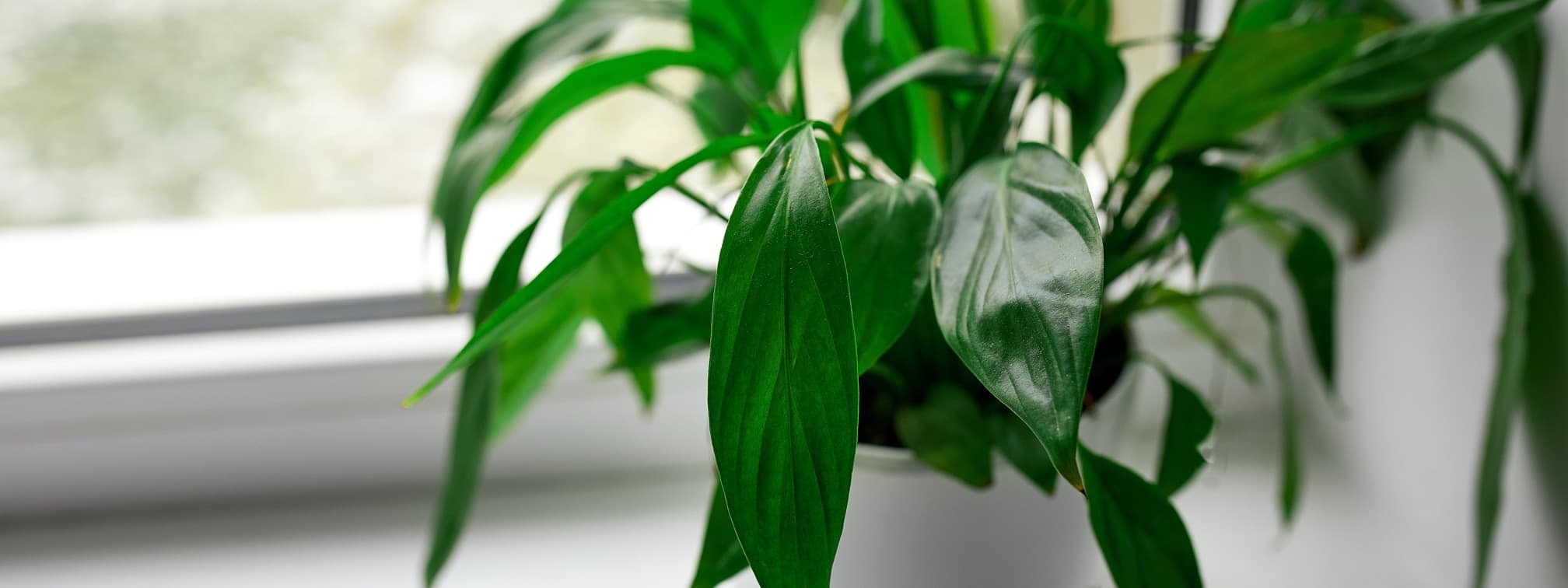Our hundreds of growing guides are each reviewed by RHS Master Horticulturists.
Our contributors include RHS Gold Medallists, estate gardeners, society members and more!
Houseplants can be a great introduction to the world of gardening – when we talk about houseplants, we are usually talking about plants grown for ornamental purposes indoors.
Often, though not exclusively, of course, they are plants that cannot typically be grown outside in the UK. They will often originate from places with warmer climates than our own.
Houseplants can be evergreen tender perennials, shrubs, climbers, palms, orchids, succulents or bulbs…They are generally those plants that are grown indoors, but which typically require little care and which, apart from a little watering and general care, can pretty much be left to their own devices. Houseplants come in many shapes and sizes.
Some have large and impressive architectural form and attractive or interesting foliage, others beautiful blooms in a wide range of colours. The main thing that defines them is that they are grown indoors all year.
The most common houseplants include subtropical and tropical species – including a huge range of succulents, cacti, and bromeliads. Air plants are another category of houseplants that are currently popular to grow.
Aloe Vera / Amaryllis / Anthurium / Areca Palm / Asplenium / Azalea Japonica / Bamboo / Begonia / Bromeliad / Caladium / Chinese Money Plant / Cineraria / Citronella / Coleus / Crassula / Croton / Dendrobium / Dieffenbachia / Dragon Tree / Echeveria / Ferns / Ficus Elastica / Fiddle Leaf Fig Tree / Geraniums / Ginger / Hoya / Kalanchoe / Kentia Palm / Mandevilla / Nepenthes / Oxalis / Philodendron / Peace Lily / Phalaenopsis / Plumeria / Poinsettia / Pothos / Schlumbergera / Schefflera / Sedum / Sempervivum / Senecio / Snake Plant / Spanish Moss / Spider Plant / Strelitzia / Streptocarpus / Swiss Cheese Plant / Venus Fly Trap / Weeping Fig / Yucca / ZZ Plant
The first rule in caring for houseplants is to provide environmental conditions suitable for the particular plants you are trying to grow. You need to think about temperatures, ventilation, humidity levels and light.
Most houseplants will do best in a reasonably warm location where the temperatures do not fluctuate too much. This is why they are typically kept in rooms that experience level temperatures throughout the year. During winter, however, some plants may need to be moved to a cooler room to prevent overheating during the day.
The majority of houseplants prefer to be placed in bright filtered light, though there are also houseplants that can cope with more shade. Tropical plants can often experience scorched leaves when they receive too intense sunlight through glass. Remember, light levels decrease rapidly the further back into a room (from windows) where a plant is placed.

In terms of humidity, this is something else that is important to get right. It can be a challenge when keeping certain tropical plants as houseplants. Tropical plants need a humid atmosphere and centrally heated homes in the UK and other climate zones can often easily become too dry.
The most important thing, however, when caring for houseplants, is getting watering right. Both overwatering and underwatering can cause a range of issues.
Generally speaking, you will be looking for the surface of the growing medium to dry at least a little before you apply more water – though in some cases you will wait for the growing medium to dry out almost entirely.
Use rainwater rather than tap water to water your plants whenever possible, especially when it comes to acid-loving plants. Often, you need to make sure the water gets into the growing medium and to the roots, where it is needed, rather than splashing water around and wetting the leaves.
Feeding houseplants is not always required, however, many houseplants can be fed during their active growing period (usually March to September) for best results. Organic liquid feeds can be great for a wide range of houseplants. For flowering plants, you should choose one that is rich in potassium, such as a comfrey feed.